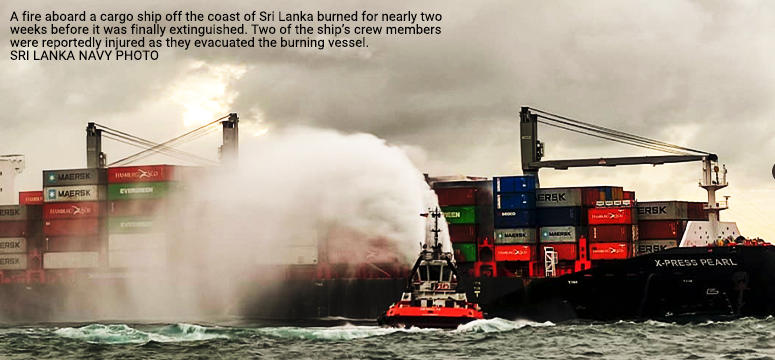The new running joke is that no matter what goes wrong in life it is a supply chain problem. But what’s no joke are the scores of cargo vessels waiting to dock and unload up and down the Pacific coast. One of the largest U.S. ports, Long Beach, Calif., could operate 24 hours a day and still not keep up with the supply of ships.
All those ships, with all those containers, with a gamut of products inside is a disaster waiting to happen. And we got a taste of that in late October when the MV Zim Kingston, loaded with 2,000 shipping containers from China and South Korea, ran into trouble in the Strait of Juan de Fuca, which splits Canada’s British Columbia and Washington State in the U.S.
When a storm rolled in, the ship stayed at sea, doing a 4 pattern, rather than requesting a safe dock. The Globe and Mail reported that the ship was hit by a wave that sent it listing 35 degrees, which knocked 109 containers into the water. Most of the overboard containers had consumer goods such as engine parts, refrigerators and toys. Two of the containers held potassium amyl xanthate and thiourea dioxide.
Potassium amyl xanthate is used in mining to separate precious minerals like gold and silver from other minerals such as limestone. It is both a flammable and a corrosive. Thiourea dioxide is used as a reducing agent by the textile industry. It too is a flammable and a corrosive, as well as being an acute toxin and a health hazard. That flammability came into play when xanthate containers still onboard caught fire.
In all, 10 containers burned for five days. U.S. and Canadian Coast Guards were deployed, as were private firefighting vessels and a municipal hazmat team.
And that was a relatively tame hazmat and fire incident. This past May, a cargo ship with 1,500 containers of hazardous materials, including 25 tons of highly toxic and corrosive nitric acid burned for 13 days off the coast of Sri Lanka.

As an NFPA article stated, this risk is likely to get worse as hazardous materials moved over water has been growing — a lot. NFPA wrote:
“According to data from the United Nations Conference on Trade and Development, over roughly the past two decades, the amount of chemicals being transported by marine vessels worldwide in terms of ton-miles, or one ton of freight carried over one mile, has increased by about 88 percent; similarly, the amount of gas has increased by over 190 percent, and the amount of oil by about 30 percent.”
When the crew of the vessel that burned near Sri Lanka noticed a nitric acid container leak, they tried to dock in Qatar and India but were denied because those ports did not have the expertise to handle such hazardous materials, according to the Washington Post.
More cargo ships are coming our way, they will be carrying more hazardous materials and they will be looking for alternative ports to get around bottlenecks at traditional ports like Long Beach. If your hazmat team is near the water, you need to be ready. Here are some tips to smooth out the sailing.
ONE
Train on finding and controlling leaks coming from shipping containers. Remember, the surface area will be slippery and possibly hot, the passages narrow and the entire structure rolling with the waves. And the containers will be several stories high and crammed together. Victims may be hard to reach or even pinpoint where they are. Instructors will need to get creative to replicate these conditions as close as possible.
TWO
Have a list of all the equipment you will need, and won’t need, if you have to deploy to a ship by boat. You won’t have the option of rolling up with as many hazmat rigs as you like and walking back if you forgot something. And you certainly don’t want to take up valuable space for things that are not needed. And, if ever there was a time for a top-notch drone program, this is it. The more data on the incident you can get before stepping on board, the better.
THREE
If possible, run through tabletop exercises with as many entities as possible who are likely to be involved in such an incident. Cargo ship hazmat leaks could turn into an incident command and logistics nightmare with international, federal, state, local and private sector players being pulled in. ICS walkthroughs will help everyone better understand their roles and those of other entities.
Original post – Copyright © 2022 HazmatNation.com. Externally linked references may hold their own independent copyright not assumed by HazmatNation











